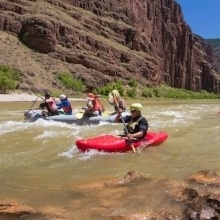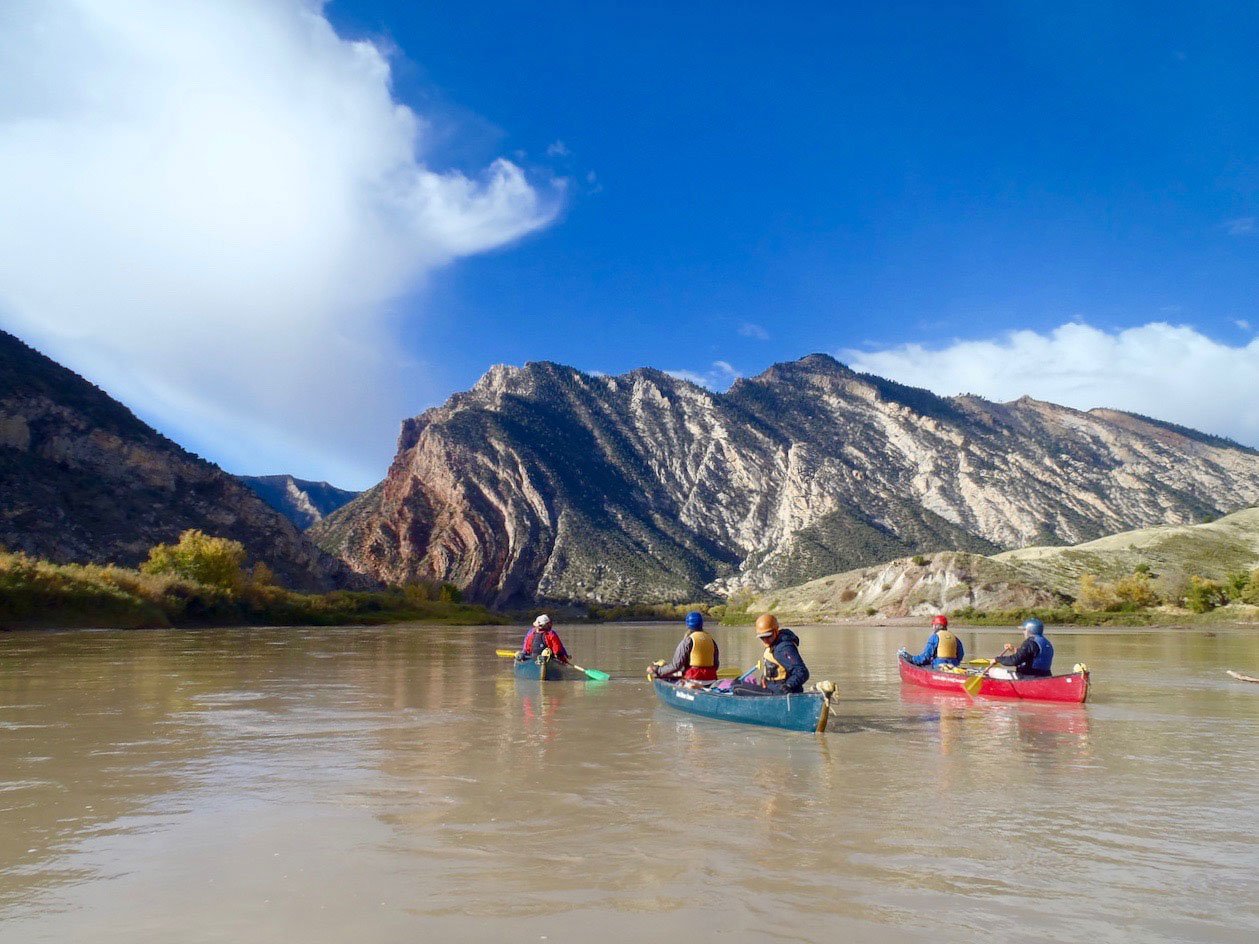Editor's note: Justin Kleberg uses the skill and expertise he gained from NOLS Wilderness Medicine in the unpredictable world of whitewater rafting. Article adapted from the Spring 2015 Leader.
The Grand Canyon's Lava Falls are a two-part rapid about a half mile long. When our fifth raft entered the rapid, the majority of the expedition was downstream setting safety and cheering. The boat was slightly off line, and at impact with the first wave, it rocked, dumping the bow passenger into the river. The oarsman stopped rowing to avoid hitting the swimmer with the oar, and in the process also tumbled out of the raft.
The team went to work. One swimmer was quickly rescued. This is the story of the other.
One swimmer was quickly rescued. This is the story of the other.
Jeff is a 71-year-old male. He entered the water at the top of the rapid and was quickly taken underwater by the current. Prior to contacting the kayak, he spent 15-30 seconds underwater. When the kayak contacted him, Jeff grabbed on but was unable to swim and assist, and then was pulled away by the current and went down for a second time.
A few moments later, he resurfaced next to the now-manned raft, only to be pushed back under and sandwiched as our upstream raft collided with it. Jeff went down for a third time, for a long time.
When he finally resurfaced at the bow of my raft, my passenger and I heaved Jeff into our raft. We caught a river right eddy at Tequila Beach, a common celebratory stop following successful runs of the rapid. Jeff was alert and oriented to person, place, time, and situation (A+Ox4), cold, wet, exhausted, and struggling to walk from the raft to the beach. He sat while team members searched his bag for warm, dry clothes.
Jeff went down for a third time, for a long time.
Within five minutes, Jeff turned purple and slumped back into the sandbank. His eyes were blood red and bulging. He was unresponsive, with agonal gasps and random episodes of snoring. He was not breathing and had no pulse—carotid, brachial, or radial. All signs pointed to cardiac arrest and the need for CPR.
One of the team members located the pocket mask from our first aid kit while I began compressions and the satellite phone call went to the National Park Service. Jeff's sternum and ribs cracked with the first compression as I set pace and rhythm in my head. After 30 compressions, we got two successful breaths into Jeff's lungs. Still no pulse and no breathing, so I continued compressions. After the seventh compression in the second set, Jeff regained a pulse. We delivered two more rescue breaths and Jeff raged back to life with fury and fire. No more than five minutes had passed.
Jeff was A+Ox3 and confused about why we were keeping him on the ground. He remembered all but the time he was unresponsive. After calming him, he seemed fine. Jeff reported no history of cardiac, respiratory, or neurological problems. He was on medication for high blood pressure. Jeff's chief complaint was sore ribs following compressions. We wrote some notes and prepared to transfer care while continuing to treat for hypothermia.
Jeff raged back to life with fury and fire.
Jeff told stories of swimming with sharks off the coast of Africa while we waited for the helicopter. He did not believe he had gone unresponsive, did not believe he needed a helicopter flight, and wanted to get up and walk around.
Nonetheless, the helicopter flew Jeff to the hospital where he spent five days in the ICU before returning home.
Thanks for the training, WMI! Right place, right time, I reckon.
Right place, right time, right training.
Visit NOLS Wilderness Medicine to learn how you can gain medical training and certifications to prepare yourself to handle the unexpected in the backcountry.
 Running rapids requires focus and skill, and even with those, sometimes the unexpected happens. Photo by Brad Christensen.
Running rapids requires focus and skill, and even with those, sometimes the unexpected happens. Photo by Brad Christensen.
Written By
Justin Kleberg
Justin is an avid whitewater kayaker who enjoys rainy days on the river, quality green wave front surfs, and crisp eddy turns.




